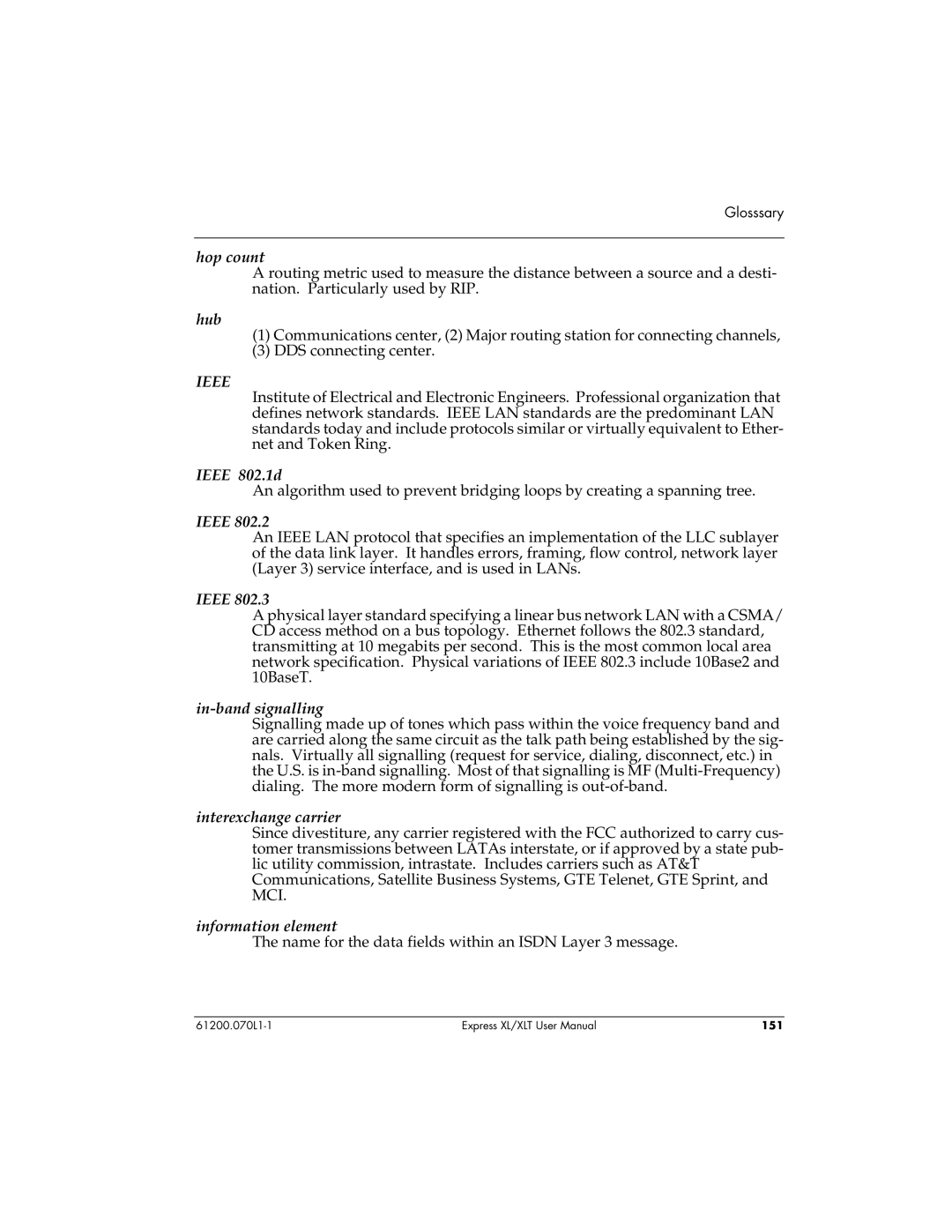
Glosssary
hop count
A routing metric used to measure the distance between a source and a desti- nation. Particularly used by RIP.
hub
(1)Communications center, (2) Major routing station for connecting channels,
(3)DDS connecting center.
IEEE
Institute of Electrical and Electronic Engineers. Professional organization that defines network standards. IEEE LAN standards are the predominant LAN standards today and include protocols similar or virtually equivalent to Ether- net and Token Ring.
IEEE 802.1d
An algorithm used to prevent bridging loops by creating a spanning tree.
IEEE 802.2
An IEEE LAN protocol that specifies an implementation of the LLC sublayer of the data link layer. It handles errors, framing, flow control, network layer (Layer 3) service interface, and is used in LANs.
IEEE 802.3
A physical layer standard specifying a linear bus network LAN with a CSMA/ CD access method on a bus topology. Ethernet follows the 802.3 standard, transmitting at 10 megabits per second. This is the most common local area network specification. Physical variations of IEEE 802.3 include 10Base2 and 10BaseT.
in-band signalling
Signalling made up of tones which pass within the voice frequency band and are carried along the same circuit as the talk path being established by the sig- nals. Virtually all signalling (request for service, dialing, disconnect, etc.) in the U.S. is
interexchange carrier
Since divestiture, any carrier registered with the FCC authorized to carry cus- tomer transmissions between LATAs interstate, or if approved by a state pub- lic utility commission, intrastate. Includes carriers such as AT&T Communications, Satellite Business Systems, GTE Telenet, GTE Sprint, and MCI.
information element
The name for the data fields within an ISDN Layer 3 message.
Express XL/XLT User Manual | 151 |
